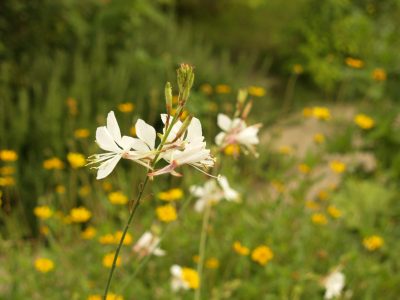What are these insects that are invading my garden?
These are red katydids, and yes, they are especially abundant this year. These insects flare up every three years or so and when they do, they can be a real nuisance. Factors this year include our 2011 drought that minimized predators. Then, we had a warm winter with lots of rainfall, which encouraged populations of all insects.
In “off” years, the normal, green coloration predominates, but in outbreak years, the red form of the insect is more prevalent. Katydids are quite voracious eaters, and these particular ones prefer oak trees. I noticed quite a few of my Mexican white oak’s leaves had been chomped, but it’s a larger tree, so it will recover quite easily. Younger trees, with fewer leaves and less carbohydrates in reserve, and stressed trees, may not recover quite as easily.
And with so many of them out there, your neighborhood likely sounds like a raucous jungle at night. The onslaught will continue through the summer, but will begin to subside over the next couple of months. The insects will eventually succumb to predators or their natural life cycle, and damaged trees will begin to recover and put on new leaves in the fall, if they haven’t already.
Visit Texas Entomology, compiled by Mike Quinn, for more about katydids and many common insects.

 Link Davidson
Link Davidson Amy Stewart
Amy Stewart Daphne Richards
Daphne Richards
 Eric Pedley
Eric Pedley